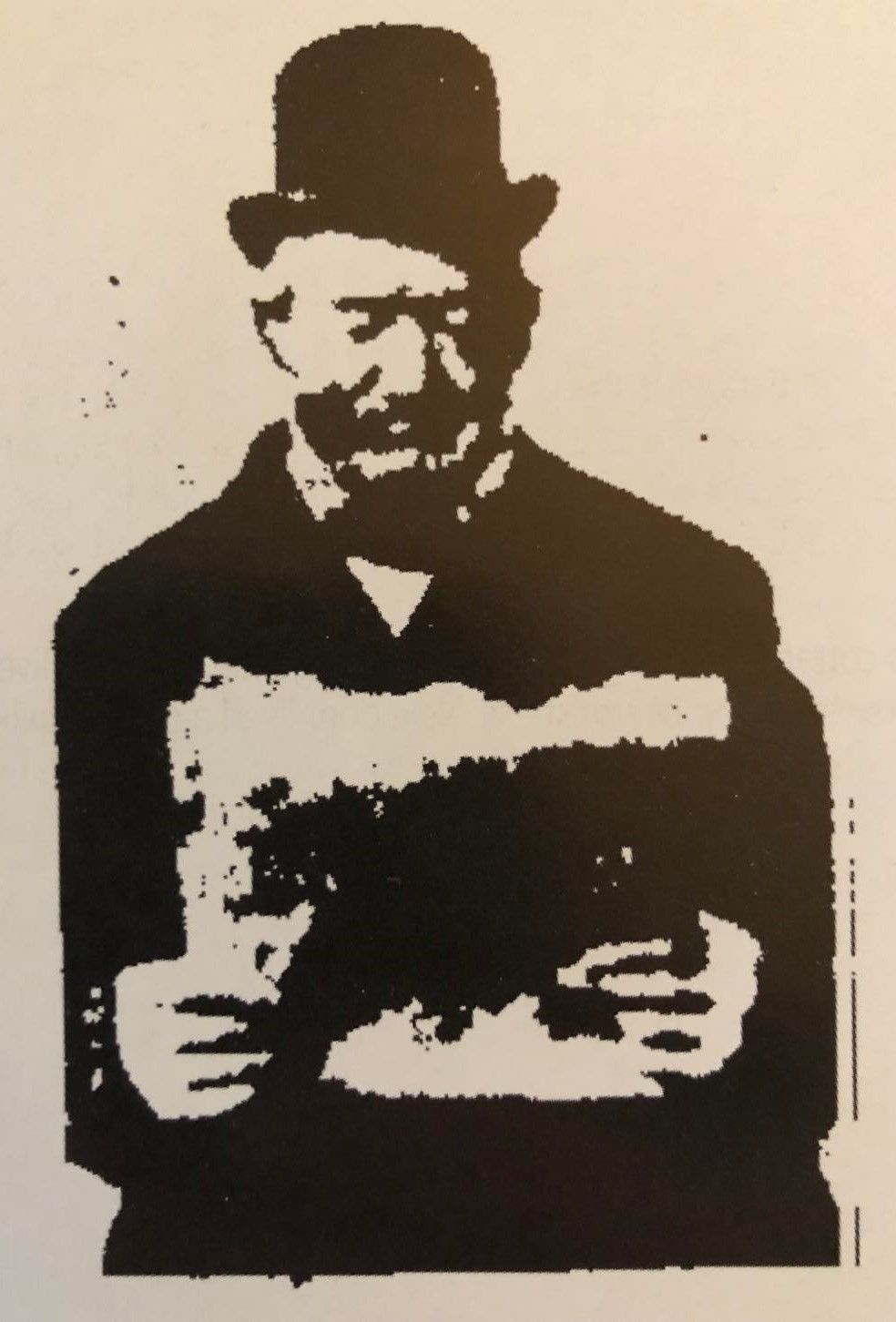Many people will be familiar with the song "The Peeler and the Goat."
Originally written by Darby Ryan of Bansha in 1830, "The Peeler and the Goat" was inspired by a number of factors affecting 19th-century Ireland. The song is reportedly inspired by police officers (Peelers) taking a number of goats into 'custody' for creating an obstruction on a road in Ireland.
A police officer finds a goat roaming the streets of Bansha and, presuming her to be either a loiterer or a 'stroller,' as used in the poem, announces that he will soon send her off to prison.
The song has been recorded by a number of artists including The Wolfe Tones and is a favourite of many traditional musicians.
Recently I met up with John Grogan, who was home on holidays from America, and he explained to me the family connection to Darby Ryan.
"Darby Ryan is my grandfather three times removed (great, great, great grandfather). In our family, we were always aware of Darby Ryan and of his many contributions to poetry and specifically 'The Peeler and the Goat', which he is most famous for. He is part of our family for as long as I can remember.
"I was first exposed to the history of Darby Ryan when I came to Ireland in 1955 to spend my summers there. After having taken some courses on Irish literature and having read extensively on Ireland, it was always a sense of pride for myself and my family when Darby Ryan's name would come up when we were going to school.
"Our connections to Bansha have unfortunately all moved on one way or the other and we have no more family left in Bansha. My aunt and uncle who were the last to live in Bansha, passed away and they had no children.
"My mother's family are from Templederry in North Tipperary and I have been coming back for many years to that area but I never come back without going to Bansha and visiting the village and the gravesites.
"When I was here last year with my sister, we looked at the Darby Ryan headstone and decided that it needed to be restored so we contacted Wally Costigan in Cahir, who specialises in that work, and he undertook the restoration work and I think that it has turned out to be a really nice job.
"No one can understand the ship's anchor on the stone but I believe there is a story attached to that and also that the headstone is made of altar marble. It was erected in 1907 almost 50 years after his death by friends, relatives, and admirers, and I thought that it was very significant that there were people 50 years after his death that went to the trouble of commissioning and erecting a headstone to his memory.
"When we asked Wally to do the work, we contacted all the Grogan family members in Ireland, England, and the United States and asked if they would like to contribute to the costs and we now have enough funds to cover the cost of the work on Darby's headstone but also on other family headstones in the graveyard.
"The outcome of the work on Darby's headstone exceeded our expectations and we are delighted that it is restored and that it has also restored our connections with the village of Bansha. We will continue to maintain it and to maintain Darby's history and his 'satirical points of view' contributions regarding politics, policing, and the general state of the world that he lived in.
"A selection of Darby's poems are available on microfilm from the National Library of Ireland and we have transcribed a number of them along with some of his satirical verses and we have produced a book of his work which will be available for anyone interested.
"We are hoping to have an event in Bansha to re-dedicate the headstone during 2023 and we will have the book of poetry available and hopefully have some people perform readings and songs from it.
"It would be amazing to have someone on horseback and to recite 'The Peeler and the Goat' outside the church, which was how Darby introduced it for the first time. This was documented in the press at the time and from there the poem got prominence nationally and internationally as one of the unique satirical pieces of its time.
"It would be great it we could recreate what Darby actually did in Bansha in 1830" said John.
John Cullinan
I was also interested to hear of John's connection to John Cullinan, MP. Cullinan was Irish Nationalist Member of the Parliament of the United Kingdom for Tipperary South, 1900–18. Born at Bansha, Cullinan became a prominent figure in the nationalist movement in Tipperary and played a leading part in the Land League and Plan of Campaign movements.
"John Cullinan was my great uncle. My grandmother was Mary Kate Cullinan, a sister of John's. Mary Kate married John Grogan of Ashgrove.
"The Cullinans had a shop and bar in Bansha, 'The Glen Bar', and they were also carriage builders. My father (Paddy), and his brothers (Willie B and Charlie) all apprenticed at the Bianconi facility in Clonmel. They subsequently came back to Bansha and they manufactured carriages and they also built a hearse which made them the funeral directors for the area.
"I only knew of John Cullinan from my father and from my uncles. They talked about him as a very special man, very committed to the cause of freedom and independence and to the community.
"He was also very involved in GAA and refereed the first All-Ireland Football Final in 1888. The Cullinan connection is a very strong one for us all.
"When John Cullinan moved into politics, my grandmother and her husband (John Grogan) moved up to Bansha and John took over and ran the pub. Later my father's brother, Willie B, being the oldest in the family, took over the pub and my father and his brother Charles emigrated to America.
"Unfortunately, Willie B died very young and subsequently the pub was taken over by my aunt Rena who married Johnny Doherty. They did not have any children and I spent my summers there in 1955/56/57 and was very close to them.
"My aunt Rena died in 1964 and Johnny was left on his own, so a cousin, Ned Grogan from Ashgrove, ended up going in with his wife Teresa to help out. Following the passing of Johnny and Ned, Teresa ended up selling the premises to Eamon O'Heney, and that was the end of the Grogan connection in Bansha.
"Spending my summers in Bansha I spent a lot of time with Johnny and behind the shop/pub there was a field which is now the soccer field. Before it was a soccer field, it was a grazing field and a garden with a couple of cows and some chickens. You went out every morning and milked the cows and fed the chickens and put the churn out in front of the shop and then went to 8 am Mass.
"I would go to Mass with Johnny and one day after Mass, Canon John Hayes, who was PP, approached me and asked why I wasn't on the altar helping to serve. I told him that I was only 10 years of age and in the States, you had to be 11 before you could serve Mass so he said we will fix that and he gave me a missal to study and he would quiz me until he felt I was ready to serve Mass. I then served Mass for Canon Hayes every morning I was in Bansha and I would go to the Church at 12:00 noon to get Mrs. Tynan's permission to ring the bell for The Angelus.
"Canon Hayes to me was 'the almighty'. He was the most prominent figure in the village and the Church was the centre of the village. He commanded tremendous respect and even at 10 years of age I knew how involved he was with so many things.
"The thing that struck me most about him was that he had time for everyone and I remember him bringing in a projector and screen to the Parish Hall one night a week and showing a movie and this was a wonderful thing for the community as for just 2p you could get to see a movie.
"Years later, I discovered the extent of his influence on community life in Bansha and throughout the country," said John.
In conclusion, I asked John about the importance of keeping Darby's memory alive. "If we could have an event in the summer it would be terrific. The book of poetry will be available as Darby wrote many other poems and verses outside of 'The Peeler and the Goat'. The headstone will be maintained as long as I am alive and I look forward to coming over in the summer to rededicate the headstone" said John.

An image of the poet Darby Ryan, who composed 'The Peeler and the Goat'
This article was submitted to the IrishCentral contributors network by a member of the global Irish community. To become an IrishCentral contributor click here.




Comments